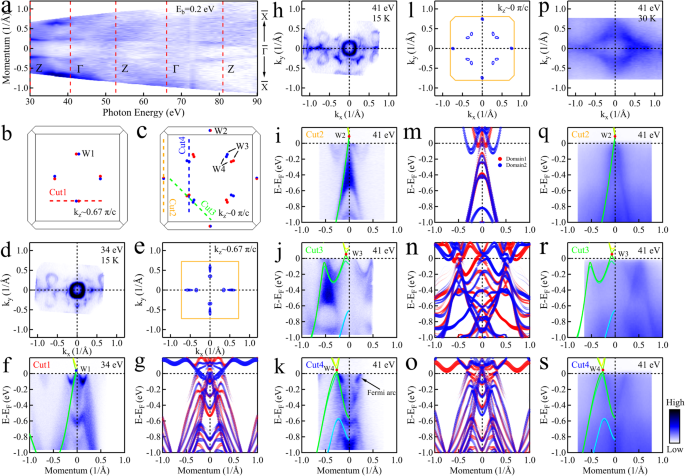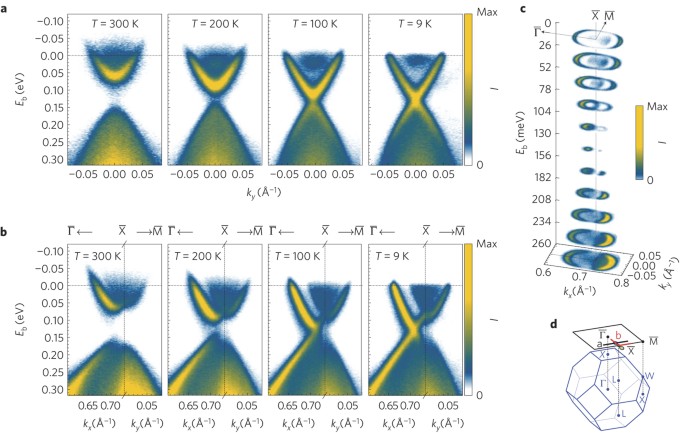Topological materials
Emergence of Weyl fermions by ferrimagnetism in a noncentrosymmetric magnetic Weyl semimetal
Condensed matter physics has often provided a platform for investigating the interplay between particles and fields in cases that have not been observed in high-energy physics. Here, using angle-resolved photoemission spectroscopy, we provide an example of this by visualizing the electronic structure of a noncentrosymmetric magnetic Weyl semimetal candidate NdAlSi in both the paramagnetic and ferrimagnetic states. We observe surface Fermi arcs and bulk Weyl fermion dispersion as well as the emergence of new Weyl fermions in the ferrimagnetic state. Our results establish NdAlSi as a magnetic Weyl semimetal and provide an experimental observation of ferrimagnetic regulation of Weyl fermions in condensed matter.
Weyl fermions in NdAlSi

Nat Commun 14, 7185 (2023)
https://rdcu.be/dVaQ2
Topological crystalline insulator states in Pb1−xSnxSe
Topological insulators are a class of quantum materials in which time-reversal symmetry, relativistic effects and an inverted band structure result in the occurrence of electronic metallic states on the surfaces of insulating bulk crystals. These helical states exhibit a Dirac-like energy dispersion across the bulk bandgap, and they are topologically protected. Recent theoretical results have suggested the existence of topological crystalline insulators (TCIs), a class of topological insulators in which crystalline symmetry replaces the role of time-reversal symmetry in ensuring topological protection1,2. In this study we show that the narrow-gap semiconductor Pb1−xSnxSe is a TCI for x = 0.23. Temperature-dependent angle-resolved photoelectron spectroscopy demonstrates that the material undergoes a temperature-driven topological phase transition from a trivial insulator to a TCI. These experimental findings add a new class to the family of topological insulators, and we anticipate that they will lead to a considerable body of further research as well as detailed studies of topological phase transitions.
ARPES data from the (001) surface of Pb0.77Sn0.23Se

Nature Materials volume 11, pages 1023–1027 (2012)
https://rdcu.be/dVaRf